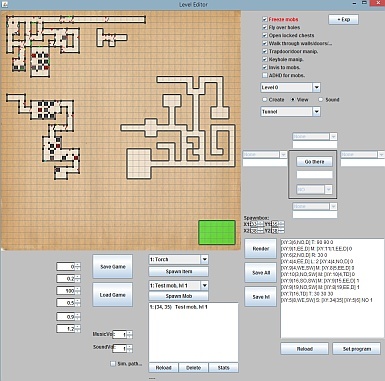A level editor should be a mesh editor, much like Blender but also very different. This mesh is not for rendering; it’s polygons will never go to OpenGL and will never have a texture. In a rendering, polygons almost always have a clear front and back, but for level design a polygon will represent things like a wall in a building and so both sides are equally important. Blender has very limited capacity for assigning meanings to polygons, edges, and vertices, but in level editing we want to declare that certain polygons are walls, certain polygons are doors, and other polygons are portals to other parts of the world. We want these parts to be color-coded so we can see the structure of the world we’re building at a glance. We want to be allowed to view cross-sections of our meshes so that we can work on interior details without anything getting in the way, but Blender models don’t usually have any interior details.
Even with all the ways that Blender fails to serve our purposes, it’s still a wonderful mesh editor. Trying to make a level editor is frustrating because so much of it is mesh editing and the best I can hope for is a weak imitation of Blender’s mesh editing facilities. It feels like reinventing the wheel, but what choice is there?
 )
)

![[Blender 3D] Level Editor Addon](https://img.youtube.com/vi/gM1N6WUQ_gc/maxresdefault.jpg)
